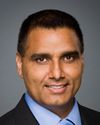Okay. As I was saying, girls are really more interested in....
For example, suppose I have some girl who is a smoker. She smokes and she doesn't have a reason for doing that. When I went to talk to her, I said, “Why do you smoke?” She said, “It's fun, and I just want to do it”. I said, “You might get some disease and die”. She said, “That's nothing new. Something's going to kill you anyway”, so that didn't work. The next time I told her, “You know what? You're going to get cancer of the mouth, and guess what? Women who get that are going to be unattractive, and nobody will kiss you again”.
That was the main thing. It worked. She refused to leave my room because she wanted to know more. She asked me what it looks like. She set out all the pictures to see what cancer of the mouth looks like, and she said, “That is really horrible. Rita, this is horrible. I would prefer to die”. I said, “No, you're not going to die. You're going to live with this for a while”.
It was interesting that this was actually what worked for her. For the next month she didn't smoke, but the downside is that she's also afraid of gaining weight, because at times when you change one behaviour, another one comes in. She's obsessed about adding some weight, so her fear was that if she stopped smoking, she was going to add weight. I said, “There's another way you can manage that”.
What I'm trying to say, in a sense, is that finding out what motivates people is actually the key to behavioural change. When I found out girls are more interested in their physical looks, I wanted to show them how they were going to look in a month's time if they continued eating burgers on a daily basis.





